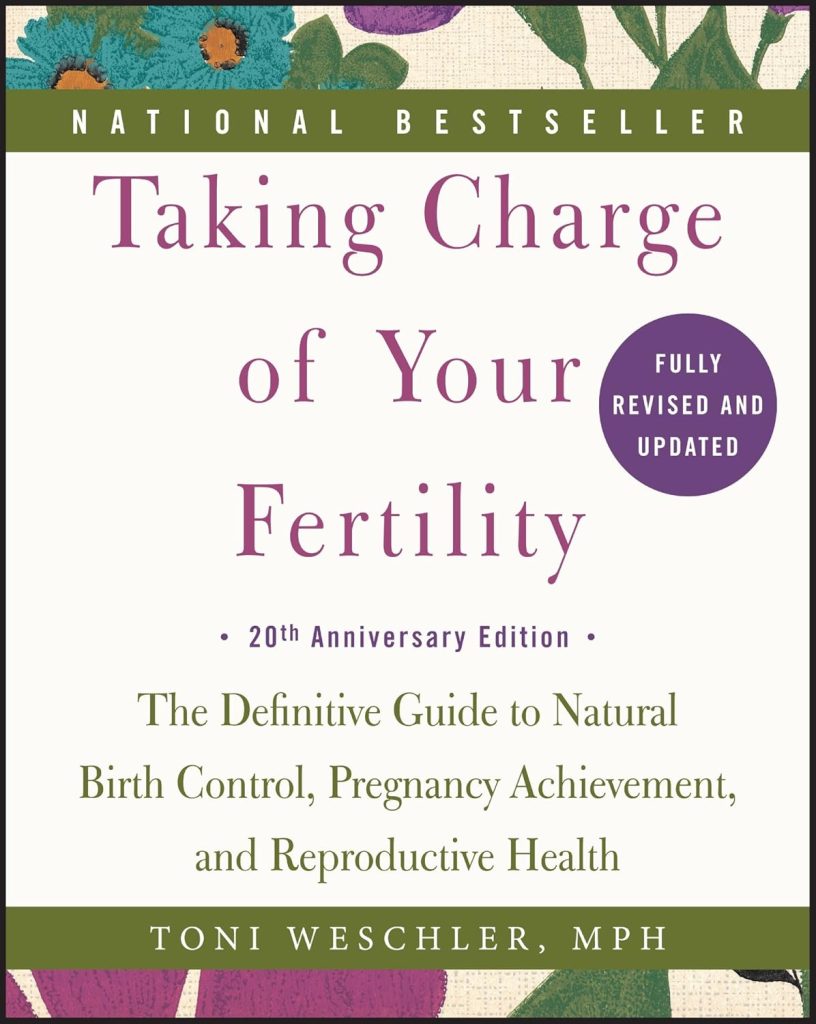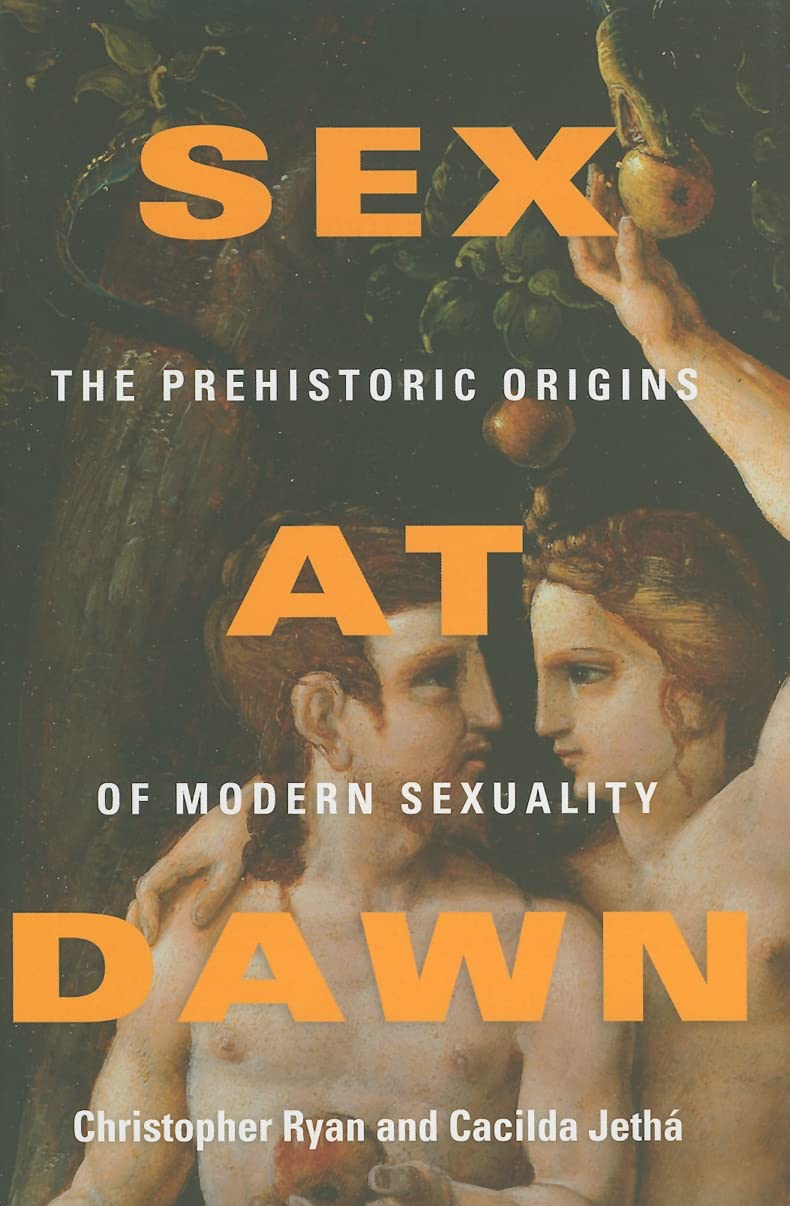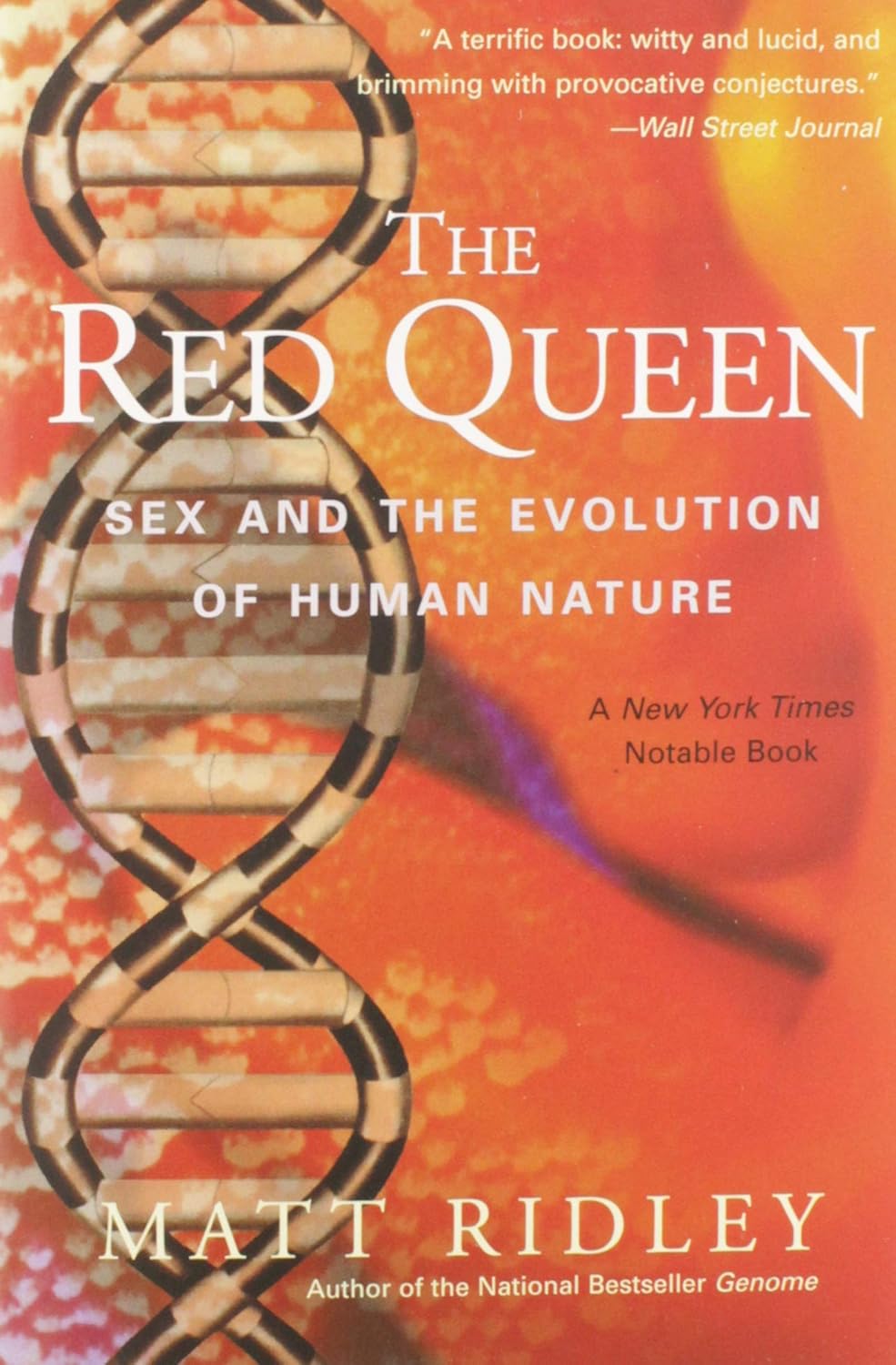
Buy The Book
Chapter
- ✦ Part One: BREAKING FERTILE GROUND: TOWARD A NEW WAY OF THINKING (CHAPTER 1-2)
- ✦ Part Two: REDISCOVERING YOUR CYCLE AND YOUR BODY (CHAPTER 3-6)
- ✦ Part Three: BEING PROACTIVE WITH YOUR HEALTH (CHAPTER 7-10)
- ✦ Part Four: NATURAL BIRTH CONTROL (CHAPTER 11-12)
- ✦ Part Five: PREGNANCY ACHIEVEMENT (CHAPTER 13-17)
- ✦ Part Six: BEYOND FERTILITY: PRACTICAL BENEFITS OF CHARTING YOUR CYCLE (CHAPTER 18-23)
Taking Charge of Your Fertility: The Definitive Guide to Natural Birth Control, Pregnancy Achievement, and Reproductive Health
About
This insightful and well-researched book provides a thorough understanding of fertility awareness and reproductive health. It teaches readers how to track and interpret signs of ovulation, empowering them to either achieve or prevent pregnancy naturally. With clear explanations, charts, and practical advice, it demystifies the menstrual cycle and highlights the importance of body literacy. The book challenges common misconceptions about fertility and birth control, offering a natural and scientifically backed approach to reproductive health. Whether someone is looking to conceive, avoid pregnancy without hormonal contraception, or simply understand their body better, this resource provides invaluable guidance.
The author, Toni Weschler, is a respected expert in fertility awareness and reproductive health education. With a background in public health and decades of experience teaching fertility awareness, she has helped countless individuals take control of their reproductive choices through knowledge and self-awareness.
For People
– Individuals trying to conceive
– Those seeking natural birth control methods
– People interested in understanding their menstrual cycles
– Healthcare professionals focused on reproductive health
– Women experiencing cycle irregularities or reproductive health concerns

Spark
Review
Like this
✦ Part One: BREAKING FERTILE GROUND: TOWARD A NEW WAY OF THINKING (CHAPTER 1-2)
A new way of thinking about fertility awareness challenges conventional beliefs that have long shaped reproductive health discussions. Many assume conception is possible at any time in the menstrual cycle, but a deeper understanding of natural rhythms reveals a more structured pattern. The body follows a predictable cycle, offering clear signs that indicate when pregnancy is possible. However, traditional education often neglects these fundamental aspects, leading to confusion and misinformation. Instead of viewing fertility as a mysterious or unpredictable process, recognizing its biological signals allows for a more informed and intentional approach to reproductive health.
Cultural misconceptions contribute significantly to misunderstandings about fertility. From an early age, many receive incomplete or inaccurate information about how the body works. Schools and healthcare systems often present the menstrual cycle as something to be managed rather than understood. Additionally, many rely on hormonal birth control without fully grasping how their bodies function naturally. Without this knowledge, individuals may feel disconnected from their reproductive health, unaware of how their cycles influence overall well-being. Challenging these ingrained misconceptions begins with understanding the body’s natural fertility signals and using them to make informed choices.
The menstrual cycle is not random; it follows a well-defined sequence of hormonal shifts that can be identified and tracked. Recognizing these patterns transforms reproductive health from something unpredictable to something manageable. Instead of fearing pregnancy as a constant possibility, awareness of fertility signals clarifies when conception is likely or unlikely. This shift in thinking replaces uncertainty with knowledge, allowing for greater confidence in reproductive decisions.
Observing physical signs such as cervical fluid, basal body temperature, and other natural indicators provides insight into fertility. These bodily changes occur in response to hormonal fluctuations and serve as reliable markers of reproductive status. Cervical fluid, for example, changes in texture and consistency depending on the stage of the cycle, signaling when ovulation approaches. Similarly, basal body temperature rises slightly after ovulation, confirming that the fertile window has closed. Tracking these signs provides a clearer understanding of the cycle, making it easier to plan for pregnancy or avoid it naturally.
Breaking free from outdated ideas about fertility requires a mindset shift. Many have been conditioned to believe that conception is always a risk without hormonal intervention. However, by understanding the body’s natural cycles, individuals can take charge of their reproductive health without unnecessary medical interventions. This approach not only supports those trying to conceive but also empowers those seeking effective, hormone-free birth control options.
A commitment to learning about fertility awareness leads to greater confidence and self-reliance. Mastering the ability to recognize fertile and infertile phases allows for informed decision-making. Rather than feeling uncertain about reproductive health, individuals gain control over their own bodies and choices. Whether the goal is conception, contraception, or simply a better understanding of personal health, this knowledge serves as a foundation for making empowered decisions.
The path to fertility awareness requires patience and practice, but the benefits are profound. Developing fluency in understanding the body’s signals fosters a sense of ownership over reproductive health. As this knowledge grows, cycles become less of a mystery and more of an accessible, predictable process. Rather than relying entirely on external sources for reproductive decision-making, individuals can use their own observations to guide choices with confidence.
Shifting to this perspective not only enhances reproductive autonomy but also encourages a healthier relationship with the body. Instead of viewing fertility as something to be controlled or feared, it becomes something to be understood and respected. This awareness fosters a deeper connection to overall health, reinforcing the idea that reproductive wellness is a vital part of well-being. With this foundation, individuals can navigate their fertility with clarity, confidence, and a sense of empowerment.
✦ Part Two: REDISCOVERING YOUR CYCLE AND YOUR BODY (CHAPTER 3-6)
The body provides clear indicators of fertility, and learning to recognize these signals transforms how reproductive health is managed. Understanding these natural signs allows for more informed decision-making, whether the goal is conception, contraception, or simply gaining a deeper awareness of personal health. The menstrual cycle is not a random occurrence but a structured biological process that follows a predictable rhythm. Recognizing patterns within this cycle enhances confidence and control over reproductive choices.
Cervical fluid plays a crucial role in fertility awareness. Throughout the cycle, its consistency changes in response to hormonal fluctuations. At the beginning of the cycle, cervical fluid may be dry or sticky, indicating low fertility. As ovulation approaches, estrogen levels rise, causing cervical fluid to become more abundant, slippery, and stretchy—similar to egg whites. This fertile-quality fluid creates a favorable environment for sperm, signaling the body’s peak fertility window. After ovulation, progesterone increases, leading to thicker, less hospitable cervical fluid, marking the end of the fertile phase. Observing these changes provides a reliable way to predict ovulation and determine fertile and infertile days.
Basal body temperature (BBT) serves as another essential fertility marker. By measuring temperature each morning before getting out of bed, subtle shifts in body heat reveal important information about ovulation. Before ovulation, BBT remains relatively low. A slight rise—typically about 0.5°F to 1.0°F—occurs after ovulation due to increased progesterone levels. This temperature shift confirms that ovulation has already taken place, helping to distinguish between pre- and post-ovulatory phases. Tracking BBT over multiple cycles creates a clear pattern, reinforcing confidence in identifying fertile windows.
Cervical position also provides insight into fertility. During the fertile phase, the cervix becomes higher, softer, and more open to allow for sperm entry. After ovulation, it lowers, firms up, and closes, creating a natural barrier to conception. While cervical position may take longer to observe accurately compared to cervical fluid and BBT, it serves as an additional marker for those seeking a comprehensive approach to fertility awareness.
Charting fertility signs offers a powerful tool for maintaining reproductive health. Recording daily observations of cervical fluid, BBT, and other symptoms allows for a clearer understanding of cycle patterns. Over time, this practice reveals regularities or irregularities that may indicate underlying health conditions. Irregular cycles, consistently delayed ovulation, or unusual temperature patterns can signal hormonal imbalances, thyroid issues, or other medical concerns. Recognizing these signs early provides an opportunity to seek medical guidance and address potential issues before they escalate.
This method is not just about conception or contraception—it is about gaining a deeper connection with the body. Many individuals who track their cycles report feeling more in tune with their overall health. Menstrual cycles reflect internal balance, responding to lifestyle factors such as stress, diet, exercise, and sleep. Becoming aware of how these elements influence reproductive health fosters a proactive approach to well-being.
While fertility awareness requires consistency and practice, it offers a natural and effective way to manage reproductive health. Unlike hormonal birth control methods, which suppress ovulation, fertility awareness works with the body’s natural rhythms. By mastering the ability to recognize fertile and infertile phases, individuals gain a sense of empowerment over their reproductive choices. Whether avoiding pregnancy, trying to conceive, or seeking greater self-awareness, this knowledge provides clarity and confidence.
The ability to interpret fertility signs transforms reproductive health from something uncertain into something fully understood. Instead of relying on external interventions, individuals can trust their own observations to guide decisions. Through careful tracking and attention to detail, fertility awareness becomes a reliable and effective tool for managing reproductive health naturally.
✦ Part Three: BEING PROACTIVE WITH YOUR HEALTH (CHAPTER 7-10)
Fertility awareness extends beyond conception and contraception; it serves as a vital indicator of overall health. The menstrual cycle functions as a reflection of well-being, offering clues about hormonal balance, stress levels, and potential medical conditions. Irregularities in cycle length, ovulation timing, or menstrual flow may signal underlying health concerns that require attention. By tracking fertility signs, individuals gain insight into their reproductive and general health, allowing for early intervention when necessary.
Lifestyle choices significantly influence reproductive health. Nutrition, exercise, and stress management all play a role in maintaining hormonal stability. A well-balanced diet rich in essential vitamins and minerals supports regular menstrual cycles. Healthy fats, sufficient protein, and whole foods contribute to optimal hormone production. In contrast, excessive caffeine, processed foods, and poor nutrition can disrupt hormonal balance, leading to irregular cycles or fertility challenges. Making mindful food choices enhances reproductive function and overall vitality.
Exercise also affects hormonal health. Moderate physical activity promotes circulation, reduces stress, and supports a balanced endocrine system. However, excessive exercise—especially without adequate nutrition—can lead to irregular or absent ovulation. Finding a balance between movement and recovery ensures that the body remains in optimal condition for reproductive health. Prioritizing stress reduction through mindfulness, yoga, or relaxation techniques further supports hormonal regulation. Chronic stress produces excess cortisol, which can interfere with ovulation and cycle regularity. Managing stress effectively promotes more consistent and healthy menstrual cycles.
Environmental factors also play a role in reproductive health. Exposure to toxins, endocrine-disrupting chemicals, and certain medications can negatively impact hormone levels. Many everyday products, including plastics, cosmetics, and household cleaners, contain chemicals that mimic estrogen or interfere with hormone receptors. Reducing exposure to these toxins by choosing natural alternatives and limiting contact with harmful substances helps protect fertility and overall health. Small changes, such as using glass containers instead of plastic and switching to organic or chemical-free personal care products, contribute to a healthier hormone balance.
Medical professionals play an essential role in reproductive health, but self-awareness allows individuals to take a more proactive approach. Understanding personal cycle patterns facilitates more informed discussions with healthcare providers. Instead of relying solely on medical interventions, recognizing fertility signals enables individuals to advocate for their own health needs. When irregularities arise, having a well-documented history of menstrual patterns allows for more accurate diagnoses and targeted treatment plans. Combining medical guidance with personal fertility observations creates a collaborative approach to reproductive wellness.
Taking an active role in reproductive health leads to greater empowerment. Whether addressing cycle irregularities, preparing for pregnancy, or seeking natural birth control, fertility awareness provides a reliable foundation for decision-making. This method fosters a deep connection between reproductive health and overall well-being. Instead of viewing fertility as something to be controlled externally, individuals learn to trust their bodies and work in harmony with natural cycles.
Knowledge of fertility signals replaces uncertainty with confidence. Recognizing when ovulation occurs, understanding how lifestyle choices impact cycles, and identifying potential health concerns early all contribute to a greater sense of control over reproductive health. This awareness transforms reproductive care from a passive process into an active, informed practice. When individuals take charge of their fertility, they gain more than just a method of birth control or conception—they gain a lifelong tool for understanding and optimizing their health.
By embracing fertility awareness, individuals achieve greater autonomy and a deeper connection with their bodies. This approach fosters a sense of empowerment, reinforcing the idea that reproductive health is not separate from overall well-being but an integral part of it. Through careful observation, lifestyle adjustments, and informed choices, reproductive health becomes something to navigate with clarity, confidence, and self-trust.
✦ Part Four: NATURAL BIRTH CONTROL (CHAPTER 11-12)
Relying on fertility awareness as a natural birth control method provides an effective, hormone-free alternative to conventional contraception. Understanding the body’s natural fertility signals allows for precise identification of the fertile window, making it possible to prevent pregnancy without medical interventions. By recognizing the specific days when conception is possible, intentional choices about sexual activity and protection become easier to make.
Avoiding pregnancy naturally requires consistent daily tracking of fertility signs. Cervical fluid, basal body temperature, and cervical position work together to indicate when ovulation occurs. By observing these changes, the fertile and infertile phases of the cycle become clear. Abstaining from unprotected intercourse or using barrier methods during the fertile window ensures effective pregnancy prevention. Unlike hormonal birth control, which alters the body’s natural cycle, fertility awareness works in harmony with reproductive rhythms, offering a method that supports overall health.
Commitment and accuracy play a key role in using fertility awareness effectively for birth control. Consistency in tracking and recording fertility signs is essential to identify patterns and confirm ovulation. Misinterpreting signs or failing to track them daily can lead to unintended pregnancy. Learning to recognize variations in cervical fluid and temperature shifts requires practice, but over time, confidence in understanding these signals grows.
External factors such as illness, stress, travel, and medication can influence fertility signs. A sudden fever may cause a temporary temperature spike, potentially leading to misinterpretation of ovulation timing. Stress can delay ovulation, making cycle prediction more challenging. Awareness of these potential disruptions allows for adjustments in tracking and decision-making to maintain the method’s effectiveness.
Combining fertility awareness with additional precautions enhances reliability. Barrier methods such as condoms or diaphragms provide extra security during the fertile phase for those who prefer not to abstain. Spermicide or withdrawal may also be used, though with varying degrees of effectiveness. Understanding personal comfort levels and risk tolerance helps determine which combination of methods works best for individual needs.
Despite misconceptions, fertility awareness offers a high level of effectiveness when practiced correctly. Studies show that when applied consistently and accurately, this method can be as reliable as hormonal contraception. The key lies in education, discipline, and ongoing attention to fertility signals. Unlike birth control pills or hormonal implants, which carry potential side effects, this approach eliminates concerns about synthetic hormones and their long-term impact on the body.
Beyond pregnancy prevention, fertility awareness fosters a deeper connection with reproductive health. Recognizing the natural ebb and flow of hormones provides insight into overall well-being. By embracing this knowledge, confidence in reproductive choices increases, reducing reliance on external medical interventions. Instead of fearing unplanned pregnancy, a sense of empowerment replaces uncertainty, making reproductive decisions more intentional and informed.
✦ Part Five: PREGNANCY ACHIEVEMENT (CHAPTER 13-17)
Maximizing the chances of conception begins with understanding the body’s natural fertility signals. Identifying the peak fertile window allows for well-timed intercourse, significantly improving the likelihood of pregnancy. Instead of relying on guesswork, tracking cervical fluid, basal body temperature, and ovulation signs provides clear indicators of when fertilization is most likely to occur.
Cervical fluid plays a crucial role in conception. Fertile-quality fluid, which appears clear, stretchy, and slippery, creates the ideal environment for sperm survival and mobility. Recognizing this shift signals the approach of ovulation, allowing for optimal timing of intercourse. Couples aiming for pregnancy benefit from engaging in sexual activity during this phase to increase the chances of sperm meeting the egg.
Basal body temperature confirms ovulation after it has occurred. A sustained increase in temperature indicates that the fertile window has closed. By charting these temperature shifts over multiple cycles, patterns emerge, making it easier to anticipate ovulation timing in future cycles. While BBT does not predict ovulation in advance, it serves as a valuable confirmation of cycle regularity and hormonal balance.
Ovulation predictor kits (OPKs) offer an additional tool for pinpointing ovulation. By detecting the luteinizing hormone (LH) surge that occurs before ovulation, these tests provide advance notice of the most fertile days. When combined with fertility awareness methods, OPKs enhance accuracy in predicting the best time for conception.
Lifestyle factors influence fertility, making overall health an important consideration in pregnancy achievement. A nutrient-rich diet, regular exercise, and stress management contribute to hormonal balance and reproductive wellness. Folate, iron, and omega-3 fatty acids support egg quality and overall reproductive function. Excessive alcohol, smoking, and caffeine intake can negatively impact fertility, making dietary and lifestyle adjustments beneficial for conception efforts.
Understanding male fertility is equally important. Sperm health plays a critical role in conception, and factors such as diet, stress, and environmental exposure affect sperm quality. Regular ejaculation, maintaining a healthy weight, and avoiding excessive heat exposure—such as from hot tubs or tight clothing—help support optimal sperm production.
For couples facing challenges in conceiving, cycle tracking provides valuable insight into potential fertility issues. Irregular ovulation, consistently short luteal phases, or an absence of fertile cervical fluid may indicate underlying reproductive concerns. Identifying these patterns early allows for informed discussions with healthcare providers and targeted interventions if needed.
Patience and persistence are essential when trying to conceive. While some achieve pregnancy quickly, others may require several months of tracking and timing intercourse accurately. Understanding that conception depends on multiple factors—egg quality, sperm health, and proper timing—helps manage expectations. Instead of feeling discouraged by unsuccessful attempts, maintaining a consistent approach to cycle tracking increases the likelihood of success.
For those exploring assisted reproductive technologies (ART), fertility awareness serves as a complementary tool. Knowing personal cycle patterns before undergoing treatments such as intrauterine insemination (IUI) or in vitro fertilization (IVF) helps optimize the timing of medical interventions. Tracking ovulation signs provides a clearer understanding of how the body responds to fertility treatments, aiding in more precise planning.
Beyond conception, fertility awareness fosters a deeper connection with reproductive health. Recognizing the body’s natural signals builds confidence in its ability to conceive. Whether pregnancy occurs naturally or with medical support, understanding fertility signs empowers individuals to make informed decisions throughout the journey.
By embracing fertility awareness, the process of trying to conceive becomes less stressful and more intentional. Instead of relying solely on medical advice or external interventions, knowledge of the body’s natural rhythms provides a sense of control and reassurance. Through mindful tracking, lifestyle adjustments, and well-timed efforts, pregnancy achievement becomes a journey guided by awareness and informed choices.
✦ Part Six: BEYOND FERTILITY: PRACTICAL BENEFITS OF CHARTING YOUR CYCLE (CHAPTER 18-23)
Tracking fertility signs extends far beyond conception and contraception. Observing cycle patterns provides valuable insight into overall health, helping to detect hormonal imbalances, underlying medical conditions, and the effects of lifestyle choices. Charting daily fertility signals reveals how external factors like stress, diet, and exercise influence reproductive health, making it an essential tool for overall well-being.
Menstrual cycles serve as a reflection of internal balance. Irregular cycles, consistently short luteal phases, or an absence of ovulation may indicate thyroid conditions, polycystic ovary syndrome (PCOS), or other endocrine disorders. Recognizing these patterns early allows for proactive healthcare decisions. Instead of waiting for symptoms to worsen, changes in cycle patterns offer an early warning system, prompting further investigation and medical guidance.
Hormonal fluctuations influence mood, energy levels, and mental clarity. Understanding these shifts makes it easier to plan activities around the body’s natural rhythms. Times of high estrogen often bring increased energy and social motivation, while progesterone-dominant phases may encourage rest and introspection. Recognizing these patterns fosters self-awareness and allows for adjustments in daily life, improving productivity and emotional well-being.
Lifestyle factors directly impact cycle health. Nutritional deficiencies, excessive exercise, and high stress levels can disrupt ovulation and menstrual regularity. Tracking cycles provides immediate feedback on how the body responds to lifestyle changes. A sudden shift in ovulation timing or an unusually long cycle may indicate the need for adjustments in diet, relaxation techniques, or sleep habits. Instead of guessing, cycle observations provide clear evidence of the body’s needs.
Medical professionals benefit from accurate cycle tracking when diagnosing and treating reproductive concerns. Instead of relying solely on standard medical tests, a well-documented history of ovulation patterns, luteal phase length, and menstrual flow provides additional diagnostic clues. Bringing detailed charts to healthcare appointments facilitates more accurate assessments, helping to identify fertility challenges, perimenopausal transitions, or conditions such as endometriosis.
Perimenopause brings natural hormonal shifts that impact cycle regularity, ovulation patterns, and overall well-being. Tracking changes in cervical fluid, temperature shifts, and cycle length helps distinguish between normal fluctuations and potential concerns. Instead of being caught off guard by irregular periods or unexpected symptoms, charting offers clarity about the transition into menopause. Recognizing these changes early provides the opportunity to adjust lifestyle habits and seek medical support if necessary.
For those recovering from hormonal birth control, cycle tracking helps monitor the body’s return to natural rhythms. After discontinuing hormonal contraceptives, cycles may take time to regulate. Observing fertility signs provides reassurance about hormonal recovery and helps determine when ovulation resumes. Instead of feeling uncertain about post-pill fertility, tracking offers a clear picture of how the body is adjusting.
Natural cycle awareness also enhances intimacy and relationships. Understanding fertility patterns fosters open communication between partners about reproductive goals. Whether preventing pregnancy, trying to conceive, or simply gaining deeper awareness, sharing cycle insights strengthens mutual understanding and cooperation. Instead of relying solely on external contraceptive methods, fertility awareness encourages a shared responsibility in reproductive choices.
Beyond reproductive health, cycle tracking supports overall wellness by promoting a deeper connection with the body. Recognizing hormonal rhythms provides a sense of empowerment, replacing uncertainty with confidence. Instead of viewing the menstrual cycle as an inconvenience, it becomes a valuable source of information about health, vitality, and emotional balance.
Embracing fertility awareness transforms cycle tracking into a lifelong tool for self-care. Whether using it for natural birth control, achieving pregnancy, or monitoring health, this practice fosters a greater understanding of the body’s signals. Rather than feeling disconnected from reproductive health, cycle awareness provides clarity and control, making it easier to navigate life’s transitions with confidence and knowledge.



















